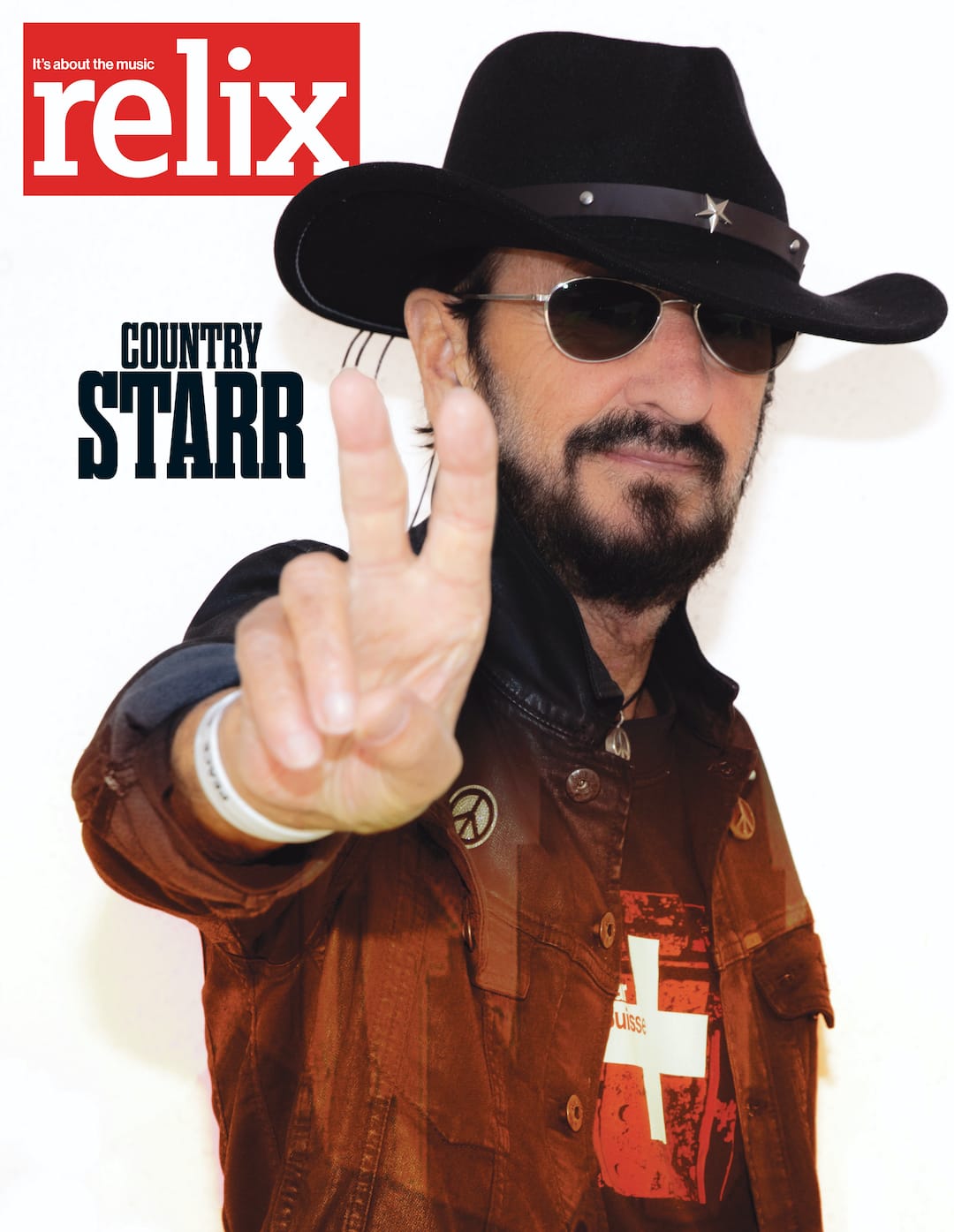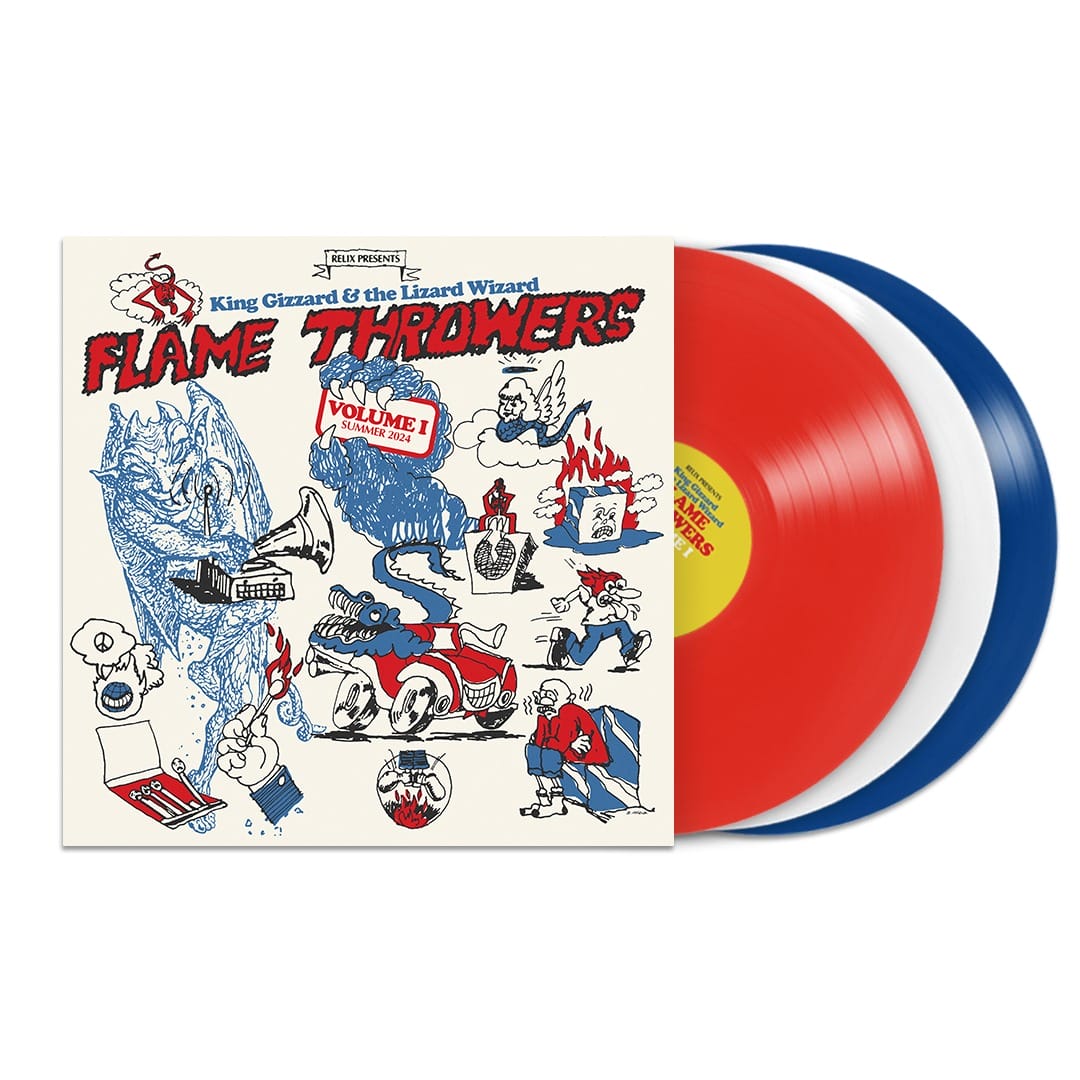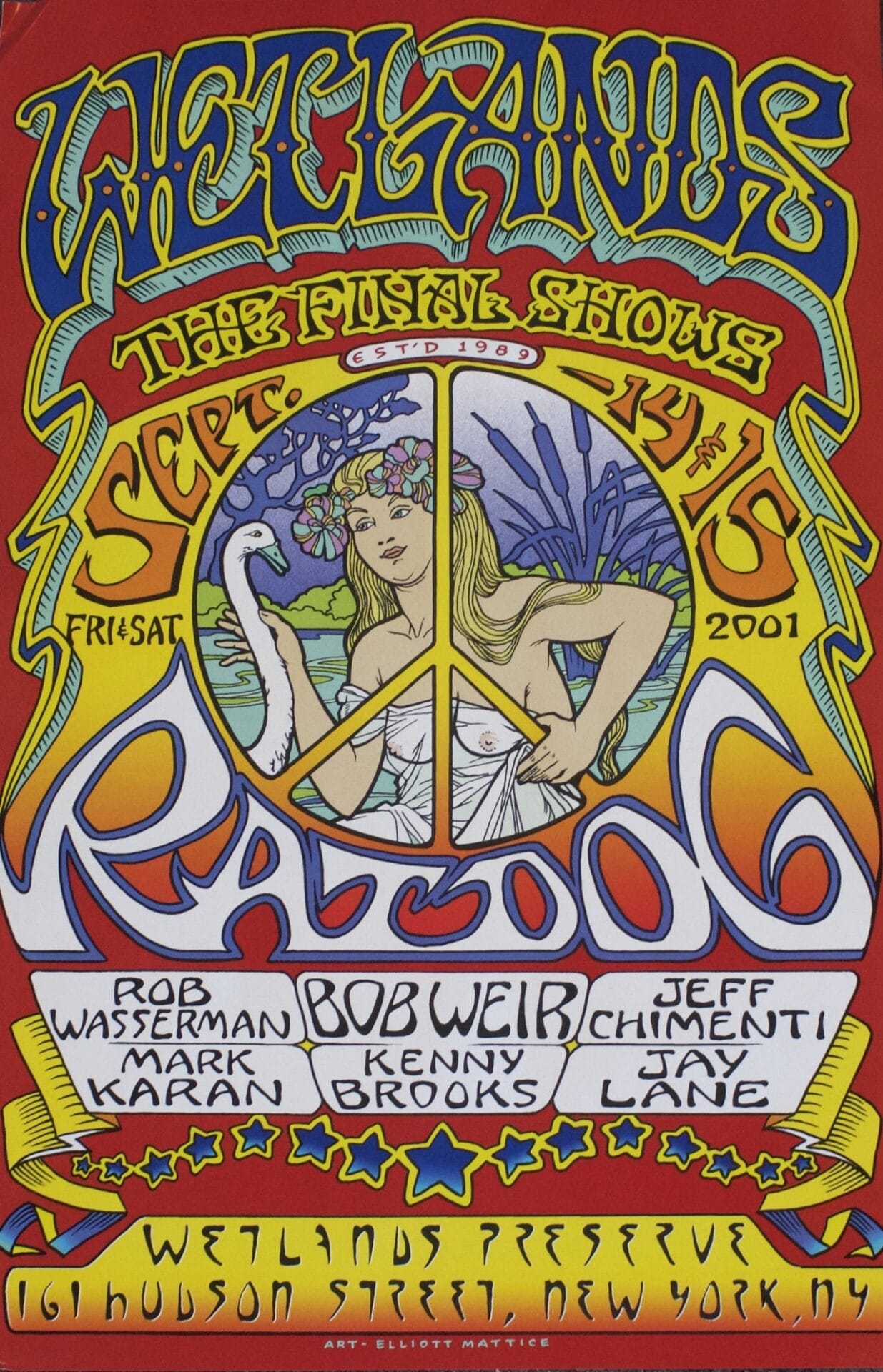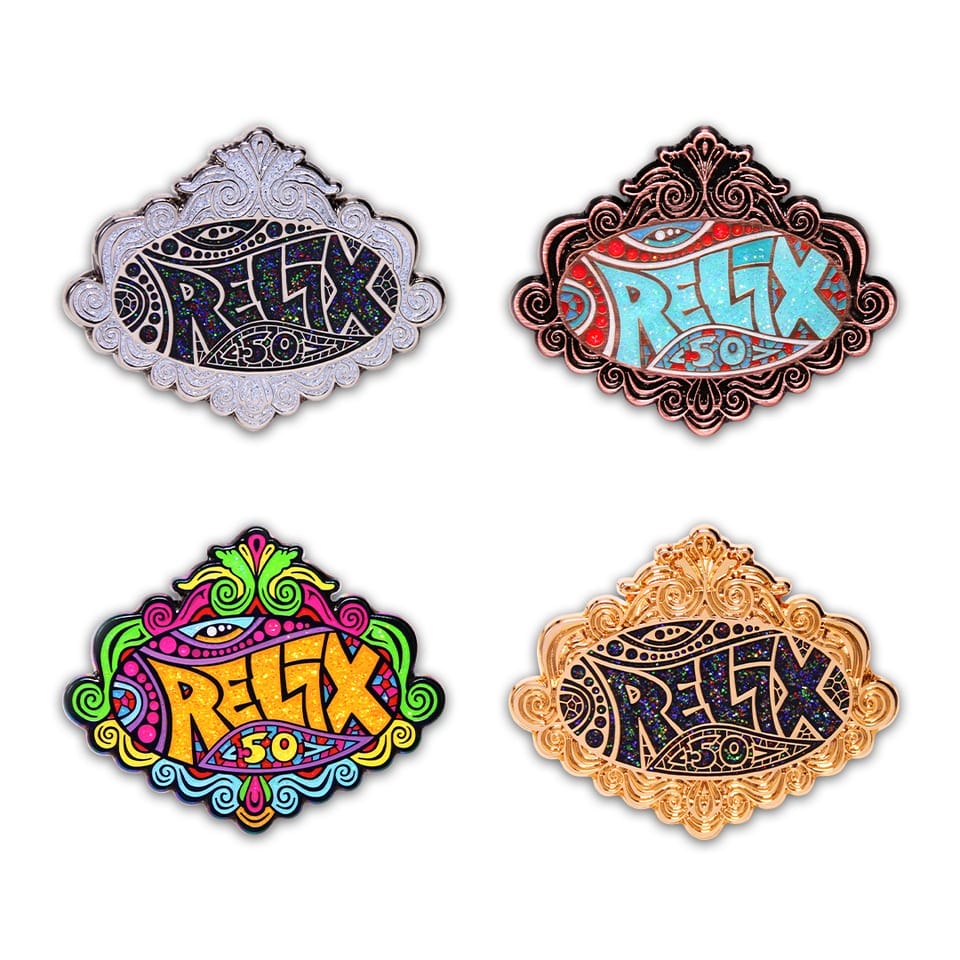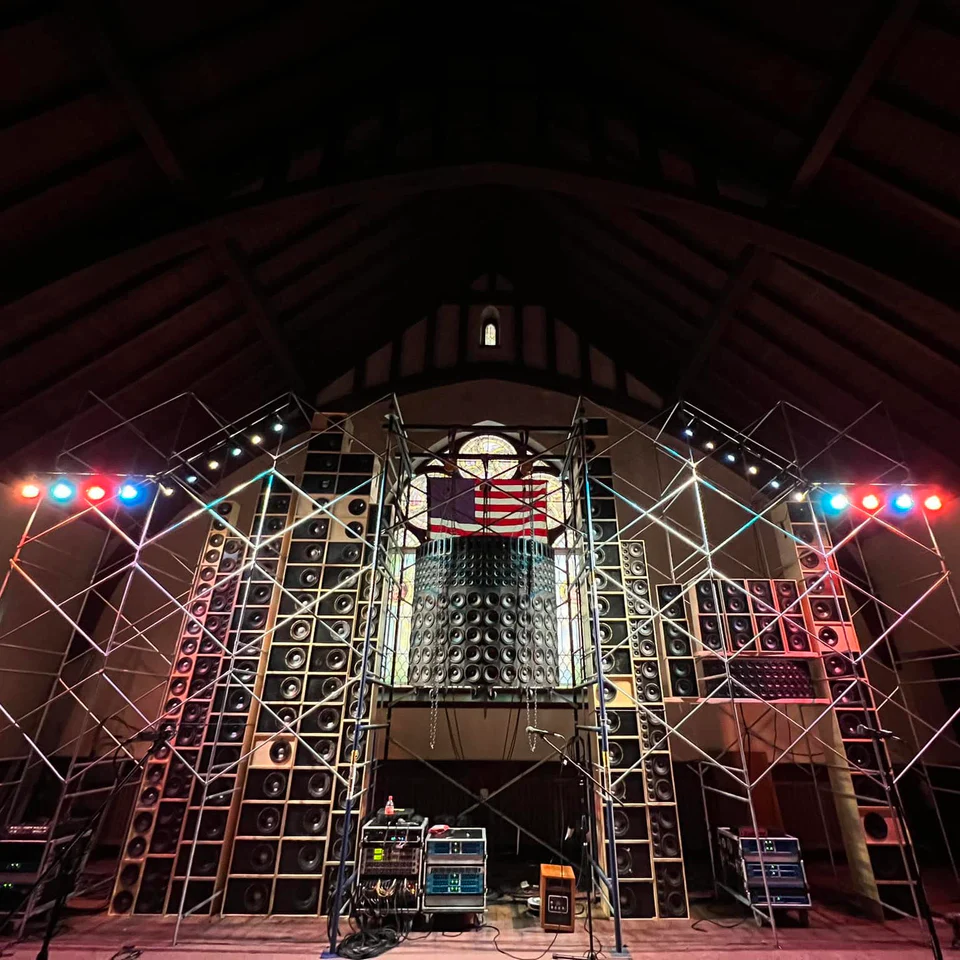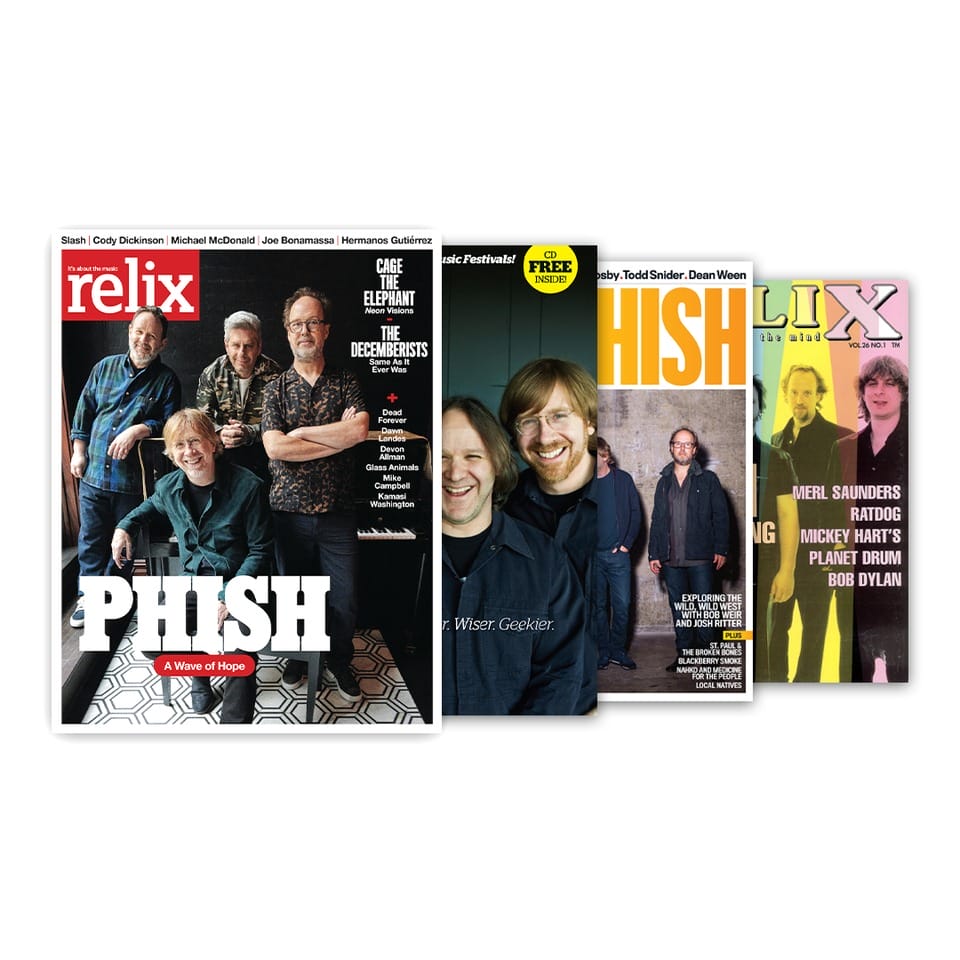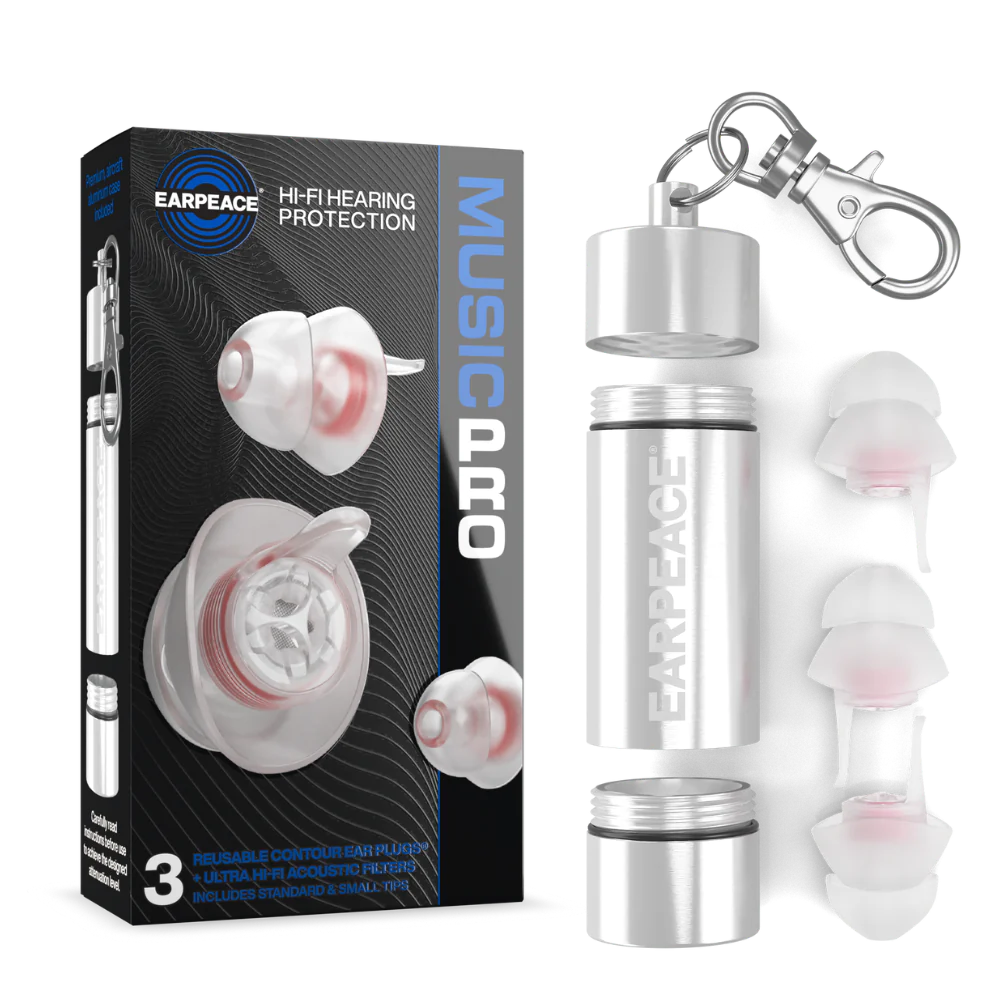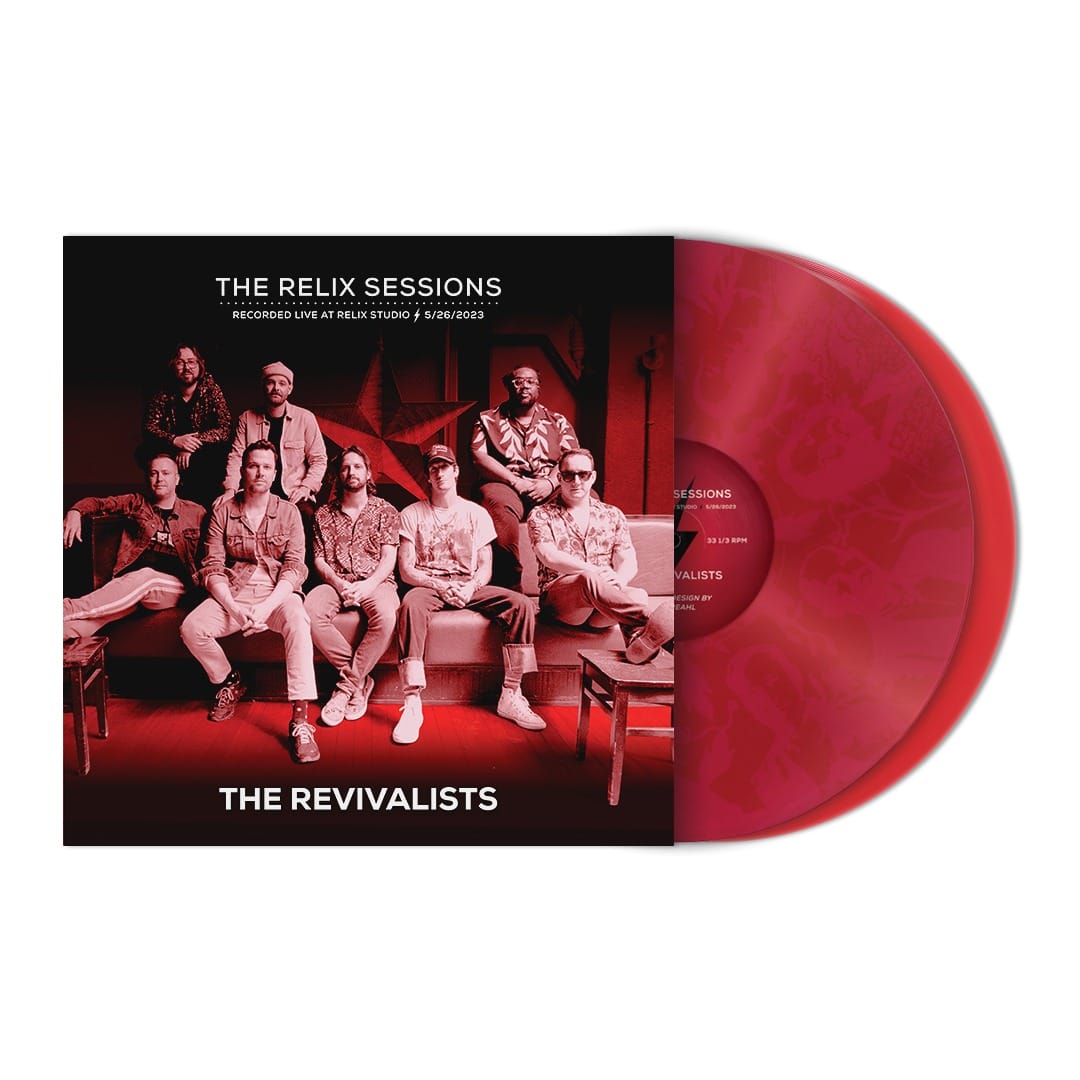From Good Homes: Navigating The Currents
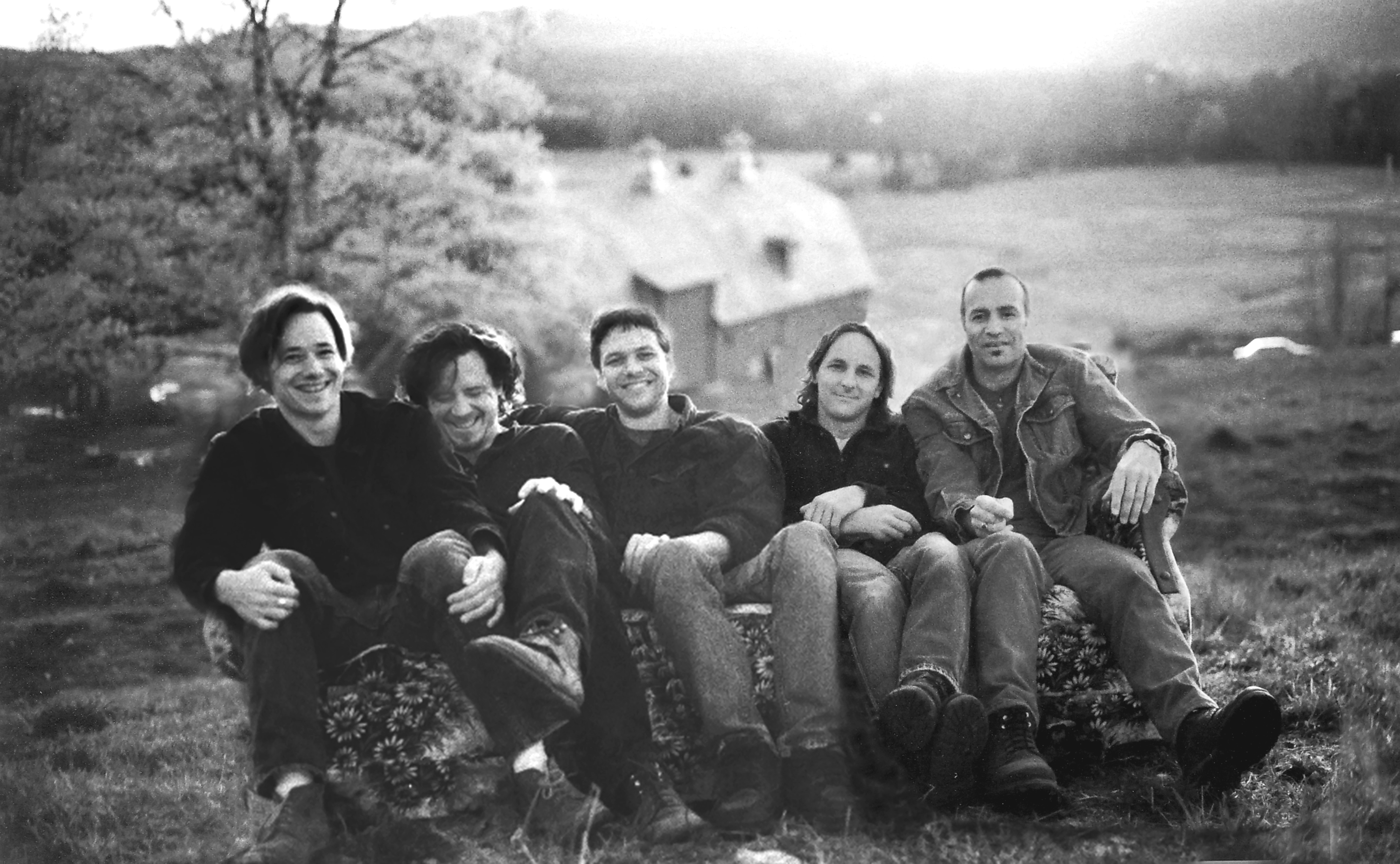
Over 20 years since their last studio album, From Good Homes return with Time and the River.
On Aug. 7, 1999, the five members of From Good Homes walked offstage at Waterloo Village, collectively believing that they had played together for the last time. They billed their appearance at the beloved outdoor Stanhope, N.J. venue as a farewell concert, recorded it for posterity, and packaged highlights into a single-disc “thank you” to their loyal following. Longtime members Todd Sheaffer, Brady Rymer, Patrick Fitzsimmons, Dan Myers and Jamie Coan all believed From Good Homes’ story was over. The bell tolled earlier in 1999, when the group’s label, RCA Records, dropped them from its roster. They were 10 years into their careers as professional musicians, had wives and newborns, and didn’t really have a desire to get back in the van and start all over again.
Today, everyone agrees they had a good run. There wasn’t a bitter aftertaste from their experiences together. If there was a villain in the narrative, then it was a familiar and formidable, albeit external, one. Maybe a few members wanted to keep things going, but they weren’t interested in replacing those that wanted to stop. “It just seemed like it was the end,” says Fitzsimmons. For all intents and purposes, it’s what makes the release of a new album, Time and the River, and a return to Waterloo, two decades later, that much more inconceivable.
Sparta High School friends Sheaffer, Rymer and Fitzsimmons started playing music together in the late-1980s and, by 1990, the trio had expanded into a quintet as From Good Homes. They quickly honed in on their self-proclaimed “hick-pop” sound, blending elements of Celtic, folk, jam, rock and jazz, finding peers and sharing audiences with Dave Matthews Band and Blues Traveler.
The group signed with RCA, releasing their major label debut, Open Up the Sky, in 1995. They toured in earnest, increasing their faithful fanbase beyond the Northeast by playing ski towns in Colorado and opening for Bob Weir’s nascent RatDog during a particularly emotional period around the death of Jerry Garcia. Yet, they never felt that RCA was a fully engaged partner in their pursuits. Lack of promotion for their ‘98 follow-up, From Good Homes, all but foreshadowed their dismissal and their subsequent send-off at Waterloo.
The musicians continued to remain active. Guitarist and singer Sheaffer assembled the roots-influenced jamband Railroad Earth in 2001. Bassist Rymer turned his talents to children’s music, earning a devoted fanbase and a Grammy nomination along the way. Drummer Fitzsimmons developed his acumen as a singer-songwriter, issuing several albums. Saxophonist Myers expanded into production, working with Adam Green, Sam Champion, Rymer and Fitzsimmons and touring with Guster, while multi-instrumentalist Coan remained busy working on his own projects and playing fiddle and dobro for Charleston, S.C.’s The Red Top Ramblers.
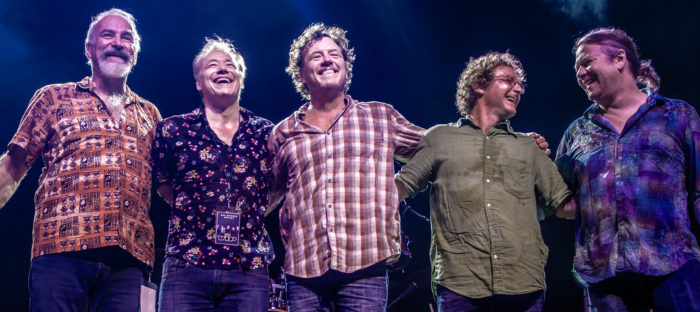
Requests for a From Good Homes reunion occasionally circled, but the real catalyst that would bring them back together was Rich Schaefer, a die-hard taper since his teens who has since gone on to hold a variety of management and concert-promotion posts throughout music industry. (He currently serves as senior vice president of global touring at AEG.) In 2009, Schaefer’s friends at Bowery Presents were set to open the Wellmont Theatre in Montclair, N.J. Schaefer saw it as the perfect opportunity to coordinate something he’d wanted for a decade.
He planted the seeds slowly. At the 2009 edition of the Mountain Jam festival, he approached Sheaffer with his plan and followed up with an email. Fitzsimmons remembers the subject line: “The Offer.” The proposal was for the band to reunite for a late-December show at the Wellmont, and the quintet agreed, enthusiastic for the opportunity to play together again. They warmed up for that date with an underplay at New York’s Mercury Lounge, and quickly From Good Homes’ Wellmont shows grew into an annual tradition, with more nights added each subsequent year to satisfy demand. Some regional promoters took notice of the capacity numbers coming out of New Jersey, and From Good Homes started adding more gigs to their calendar. They ended up playing around a dozen dates throughout their strongest markets, including a return to the Fox Theatre in Boulder, Colo., and a stop at Dave Matthews Band’s Caravan festival. They were having fun, playing to their core fans and reaching new ears.
“Time took care of any underlying stuff,” says Rymer. “It felt good to get back in ‘09, connecting as friends, without the weight of the business. We felt that, if we wanted to continue this on longer, it would be good to incorporate some new material.”
But finding the time to get the five musicians in the same place to write new songs proved to be difficult. Sheaffer’s Railroad Earth kept a full touring schedule. Geographically, as well, they were now spread out across the country. Finally, in February 2018, the group arranged a two-week retreat at a small rehearsal space back home in northern New Jersey.
The room came equipped with a Pro Tools rig and Myers set up a few mics to capture whatever they played. There wasn’t a definitive plan—just jam and see what happens. “The minute before we started playing, we all had the thought in our heads that this might not amount to anything,” says Fitzsimmons. “I think we were all a little giddy because the stuff was just flowing. It was pretty immediate.”
Coan says jamming has always been integral to the group’s songwriting process. “Some of the best material we’ve ever done, no one has ever heard. We just get on a river of creation.”
Myers compiled nearly four-dozen song candidates and distributed the raw performances to his bandmates. The question was no longer whether or not they could make a new album, but which songs would make the cut. They agreed that roughly a dozen jams from the batch were front-runners. A year later, the quintet reconvened at PonderRosa Studios in Lafayette, N.J., to begin work on the basic tracks.
The sessions came alive, mirroring the spirit of the jams. The excitement and novelty that comes with new material can sometimes be misleading. However, the band stayed focused on their intention to deliver something reflective and authentic for their audience, and for themselves.
“There are different things on our minds now,” says Myers. “We wanted the songs to be topical, but not preachy, and I think we’ve done that,” says Myers.
During From Good Homes’ 20-year absence, the role an album plays throughout the music industry has somewhat reversed. Even in more mainstream circles, a band’s goal is no longer to simply make a record for a label to sell, or singles for radio to play, and then launch a support tour. Now, an album’s principal purpose is often to sustain and grow an act’s live shows.
There still exists a completed, unreleased album, recorded back in ‘99 to serve potentially as a third LP for RCA, that rattles around in the From Good Homes attic. They talked briefly about releasing that as a “new” record. But Sheaffer, in particular, wanted to create something fresh. “[From Good Homes] is a wellspring that will never run dry,” he says. “This album is telling the story of where the band was at that moment.”
The two-decade hiatus, too, had slightly altered the roles in the group. Sheaffer, long recognized as the band’s primary lyricist, still held the pen, but the process became more inclusive. Rymer, who had historically contributed to the writing process, remained involved and Fitzsimmons brought in the basis for two songs that made the final cut.
There were band discussions about possible themes and subjects. Myers, having attended an anti-gun march in Washington with his son, provided the idea behind “I Throw Up My Hands.” Its otherwise rolling, jaunty riff is offset by a first-person lament of modern-day policymaking: “I started wondering what we’ve done/ This isn’t how it’s supposed to be/ It seems as plain as it can be/ Everything dyin’ in the sun.”
With titles like “Homeland Security,” or the insightful thoughts on immigration sprinkled throughout “Lady Liberty,” the desire to say something, to participate in the current commentary, was selfevident. “There are more social issues that are raised on this album, but I think that’s inevitable because we’re alive in the moment,” Sheaffer says. “I’m really proud that it’s an album that’s relevant to the past and our fans, but also to the moment we’re living in now.”
Sheaffer’s point is subtle yet critical to Time and the River’s effectiveness. From Good Homes did not grow with their audience so much as they naturally reconnected with it, like an old friend returning to the neighborhood. The commonalities of their past remain unchanged and, because of that, allowed them to write about their own present feelings with the confidence that they would resonate.
Rymer noticed that his bandmates’ connection felt deeper and more trusting despite, and possibly because of, the time apart. The five personalities were creating music that was richer and more reflective. “It was really an expression of five coming together as one,” he says.
As Coan adds, “When we toured with RatDog, Bob Weir told us, ‘Keep doing what you’re doing. That’s what worked for us. It’s magical, and it gets better because of our collective experience.’”
Though the members of From Good Homes aren’t interested in Spotify success or modern music trends, the only lingering disappointment from their ‘90s run is their relationship with RCA. Unanimously, they agree that the industry powerhouse did not put its best effort behind supporting the group. So, this time, they decided to release their new music themselves.
“We didn’t have great experiences recording our previous albums. It was trying. It wasn’t a lot of fun,” says Fitzsimmons. “This was delightful. It’s the best we’ve ever played in the studio.”
“We didn’t miss [a label’s influence] a bit,” Coan adds.
By the late fall of 2018, despite some shows at New Jersey’s Newton Theatre approaching, the band had not yet completed the album. But they wanted to give their fans a sense of what they’d been doing; the contemporary relevance of “Lady Liberty,” as a statement on immigration policies, felt particularly poignant. So the band decided to release the number as part of a three-song EP, also titled Time and the River.
At the time, Sheaffer suggested that the three songs could be the completed versions that would appear on the forthcoming album. Perhaps their biggest hurdle was deciding on final mixes. “The biggest challenge might be saying, ‘We’re done. We can’t do anything more with this song,’” says Myers. “Everybody’s got a lot of ideas but, at some point, you have to be finished.”
Though they were still exchanging new mixes of the 11 tracks around Memorial Day, they also decided to begin their next chapter where their story ended two decades ago—with a release show at Waterloo on Aug. 3, which, perhaps not coincidentally, happens to be Rymer’s birthday. It was a twist on the modern adage: They are going big and going home. Fitzsimmons, for one, is happy to see the venue represent a beginning, not an end.
They also have a champion in Rich Schaefer, who put a stop to the manager turnstile that was spinning just before the split. All five acknowledge a debt of gratitude to Schaefer’s influence in advising the group and, in particular, navigating the jungles of social media. “It’s a passion project, and one that the 16 year old in me could never dream of,” says Schaefer.
Plus, they have an album that each member praises as containing some of the best work the group has ever done. It’s a bit baffling that two decades apart—without any preexisting acrimony to resolve— was a recipe for such success. “I would have a hard time believing that it’s unique to us,” says Sheaffer. “What might be unique is that we didn’t part with any animosity or bad feelings. We were friends before we ever were a band.”
Myers says the hardest thing in the world is predicting what will happen in the music business. The success of Time and the River will dictate the next move for the quintet. They all have lives and careers outside of From Good Homes. Yet, they all are ready to see how it goes, and, if needed, devote more time to performing together.
“It’s not the end of the world now if our record doesn’t top the charts. Having that pressure removed makes it a lot easier,” says Sheaffer. “We’re doing it for the love of the music.”
This article originally appeared in the October/November 2019 issue of Relix. For more features, interviews, album reviews and more subscribe below.



